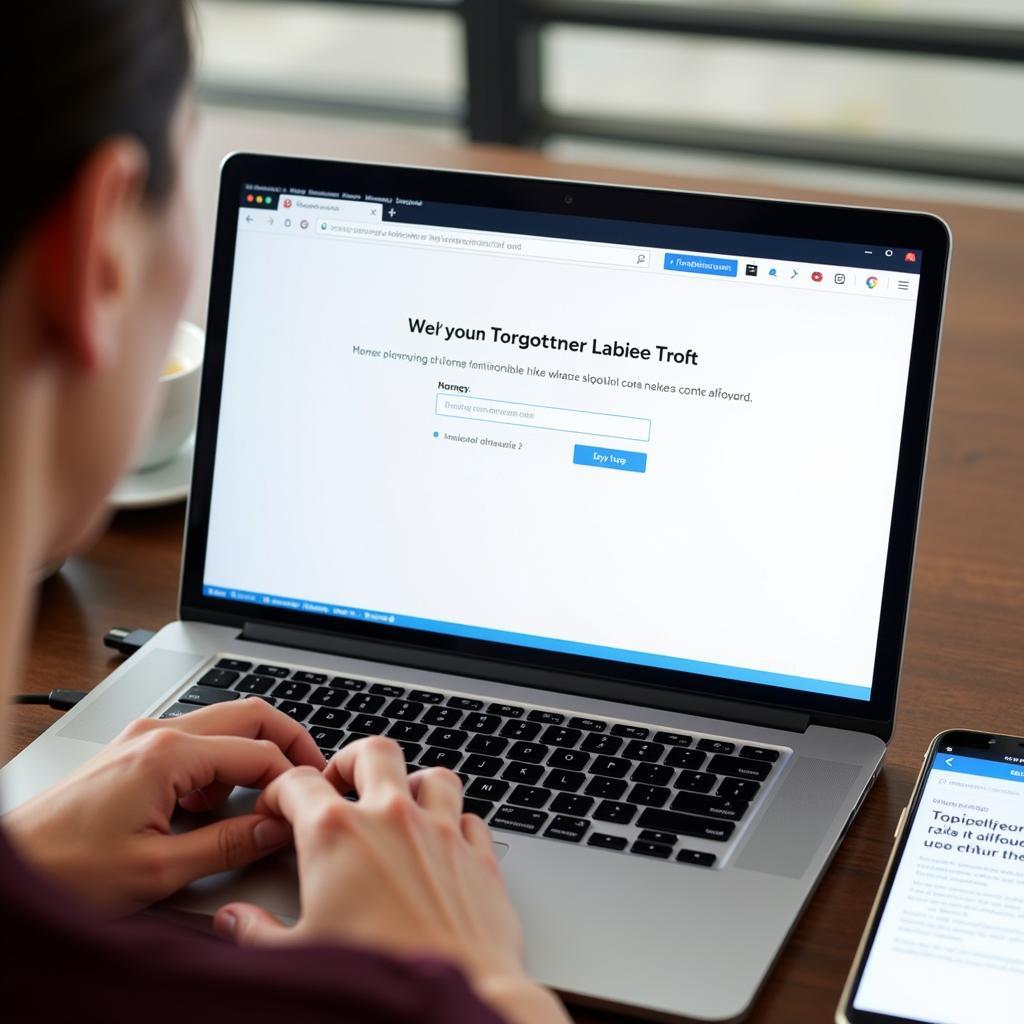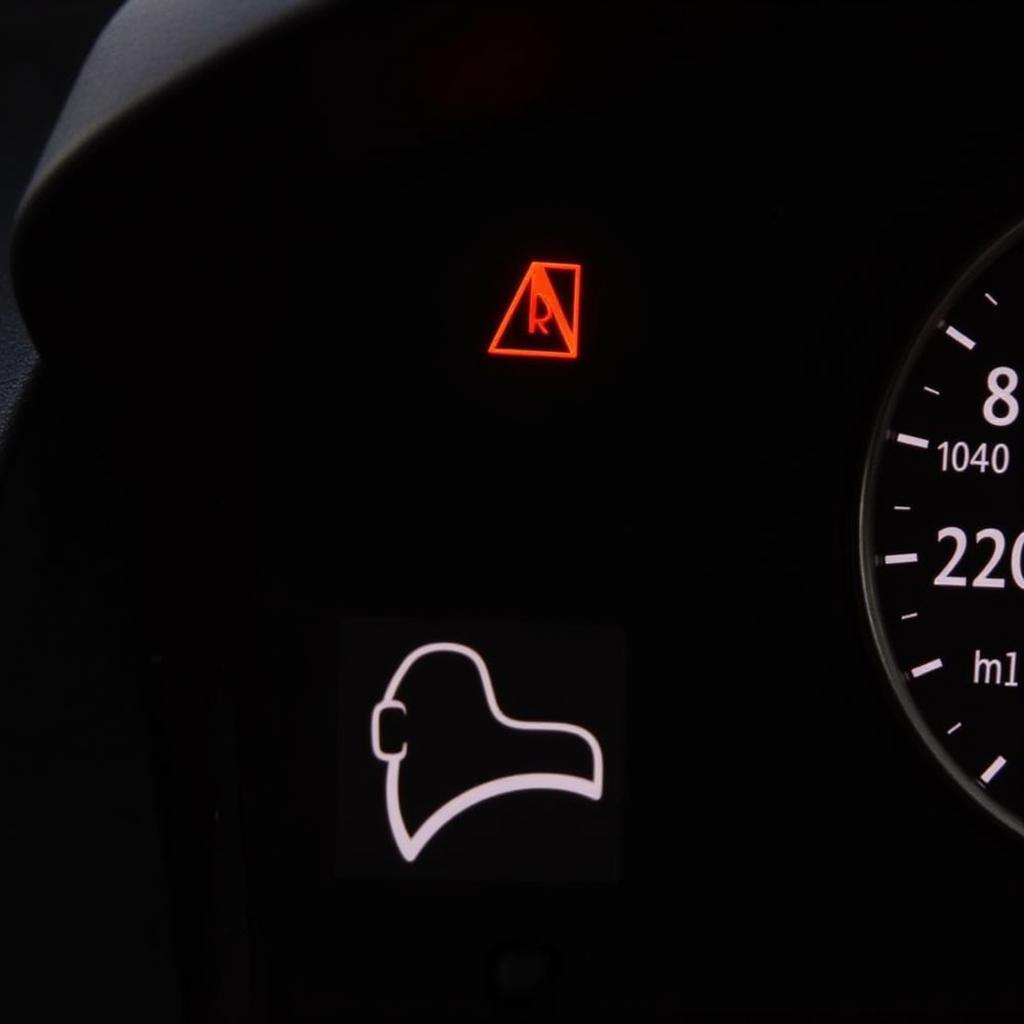A brake warning light flashing on your dashboard can be a nerve-wracking experience. It’s a clear signal that something isn’t right with your car’s braking system and requires immediate attention. Ignoring it could lead to dangerous situations on the road. But what exactly does it mean, and how should you react? This article will delve into the common causes of a brake warning light, how to troubleshoot them, and when professional help is necessary.
Understanding Your Car’s Brake System
Before we jump into the reasons behind a brake warning light, it’s essential to understand the basics of how your car’s brake system works. Modern vehicles typically utilize a dual braking system, separated into two independent circuits:
- Hydraulic System: This system uses brake fluid to transmit force from the brake pedal to the brake calipers, which then squeeze the brake pads against the rotors, slowing down the vehicle.
- Parking Brake: This system, usually cable-operated, directly engages the rear brakes for parking or as an emergency backup.
The brake warning light is connected to various sensors within this system. When these sensors detect an issue, they trigger the warning light on your dashboard.
Common Reasons Your Brake Warning Light is On
There are several reasons why your brake warning light might illuminate. Let’s explore the most common culprits:
1. Low Brake Fluid Level
This is the most common cause of a brake warning light. Brake fluid is essential for the hydraulic system to function correctly. If the fluid level drops too low, it usually indicates a leak in the system.
Troubleshooting:
- Check the brake fluid reservoir. Locate the reservoir under the hood (refer to your owner’s manual if you can’t find it) and check the fluid level. If it’s low, adding brake fluid might temporarily solve the problem, but it’s crucial to get the leak inspected and repaired by a professional as soon as possible.
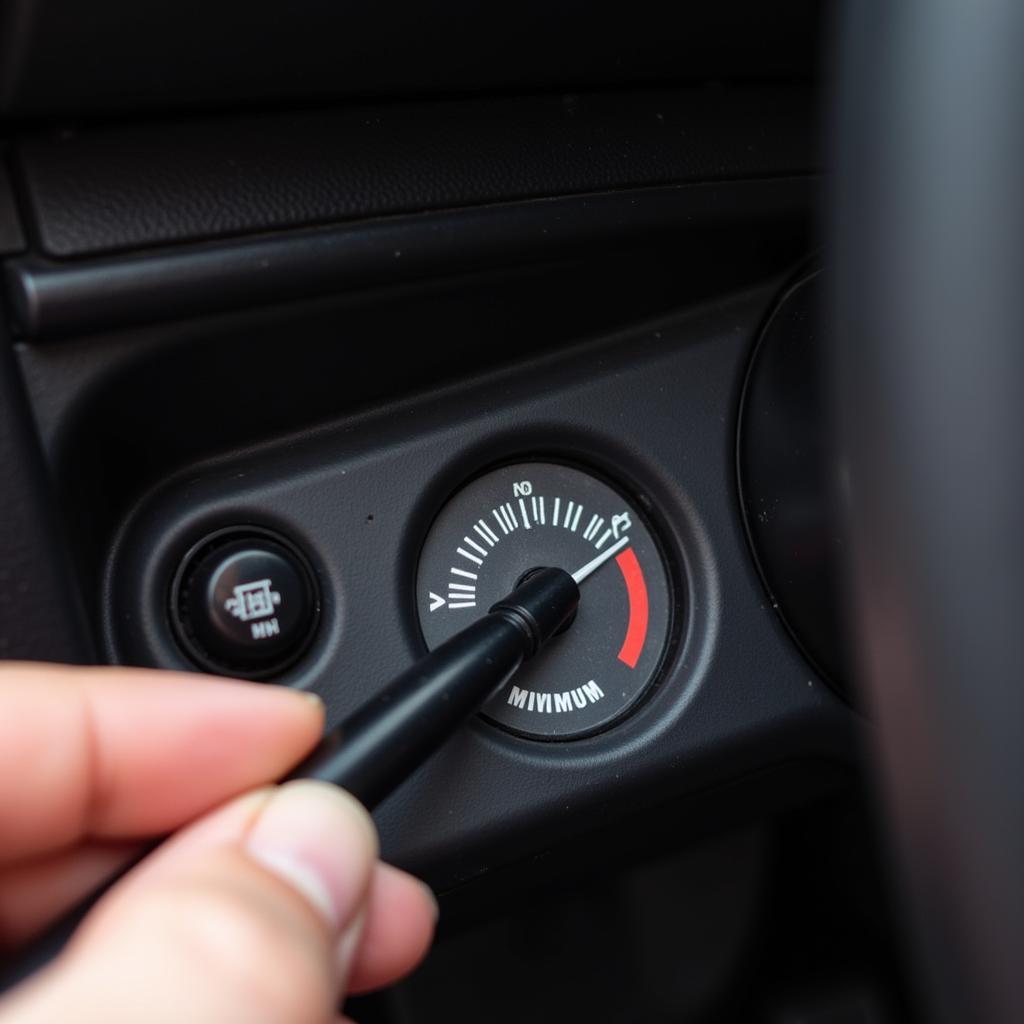 Checking Brake Fluid Level
Checking Brake Fluid Level
2. Worn Brake Pads
Brake pads are designed to wear down over time. Most modern cars have wear sensors integrated into the brake pads. When the pad material wears down past a certain point, the sensor triggers the brake warning light.
Troubleshooting:
- Listen for noises. Worn brake pads often produce a high-pitched squealing or screeching sound when you apply the brakes.
- Feel for vibrations. You might also feel vibrations in the brake pedal or steering wheel when braking.
- Have your brake pads inspected. If you suspect your brake pads are worn, it’s best to have them inspected and replaced by a qualified mechanic.
3. Faulty Brake Caliper
The brake caliper houses the piston that pushes the brake pads against the rotors. If a caliper becomes stuck or seizes, it can cause uneven braking, dragging, and trigger the warning light.
Troubleshooting:
- Check for uneven wear. A stuck caliper will often cause uneven wear on one side of the brake pads compared to the other.
- Inspect for leaks. A leaking brake caliper can also contribute to low brake fluid levels.
- Seek professional help. Caliper issues require professional attention.
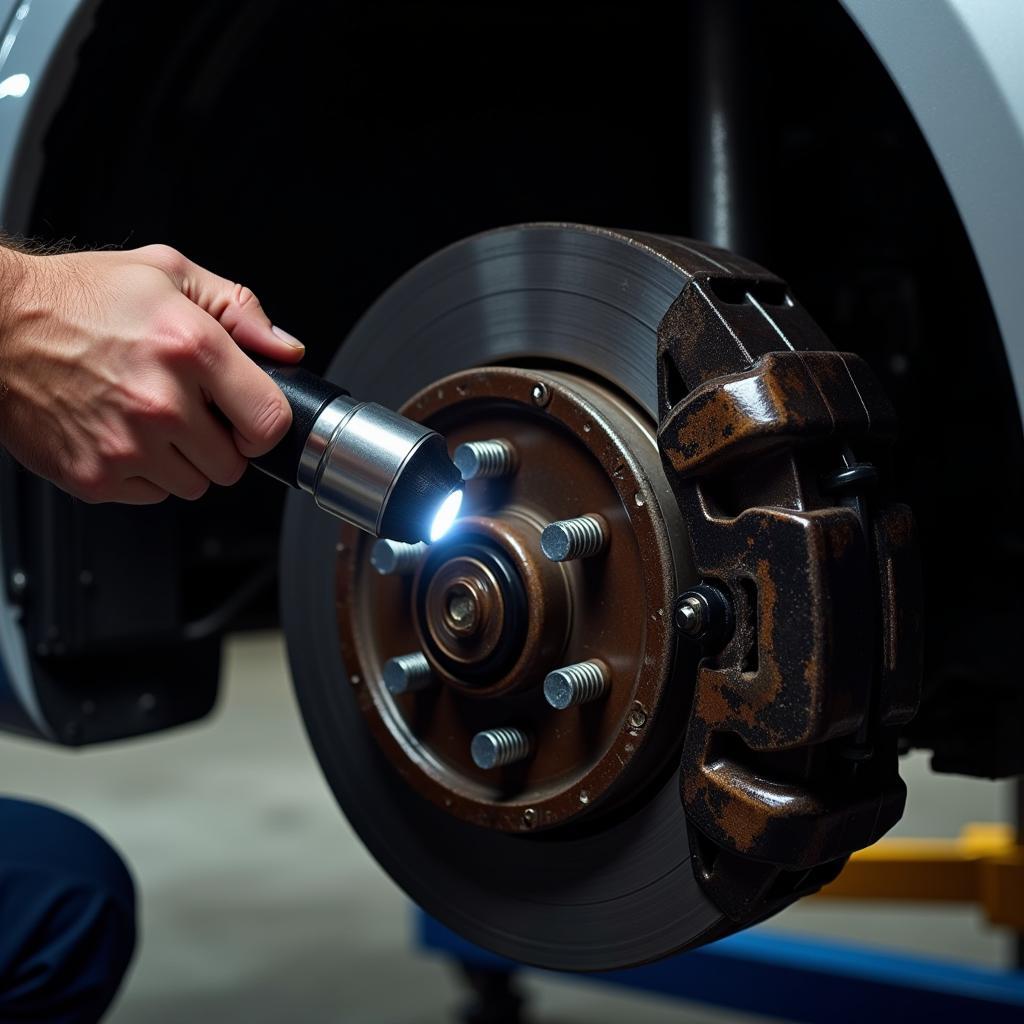 Inspecting Brake Caliper for Leaks
Inspecting Brake Caliper for Leaks
4. ABS Problem
The Anti-lock Braking System (ABS) prevents your wheels from locking up during hard braking, helping you maintain steering control. If the ABS module or a wheel speed sensor malfunctions, the system might disable itself, triggering the brake warning light.
Troubleshooting:
- Check the ABS warning light. If the ABS warning light is also illuminated along with the brake warning light, it indicates a problem specifically with the ABS system.
- Get a diagnostic scan. A professional mechanic can use a diagnostic tool to read the ABS module’s fault codes and pinpoint the exact issue.
5. Brake Light Issues
While less common, a faulty brake light switch or a blown brake light bulb can also sometimes trigger the brake warning light.
Troubleshooting:
- Check your brake lights. Have someone press the brake pedal while you inspect if all brake lights illuminate correctly.
- Inspect the brake light switch. The switch activates the brake lights when you press the pedal. A malfunctioning switch might require replacement.
What to Do When Your Brake Warning Light Comes On
If your brake warning light comes on, it’s crucial to:
- Stay Calm and Assess: Don’t panic. If you’re driving, safely pull over to the side of the road as soon as possible.
- Check for Obvious Signs: Inspect the brake fluid level and look for any visible leaks or damage.
- Proceed with Caution: If the brake pedal feels normal and you don’t notice any leaks, you might be able to drive slowly and carefully to a nearby mechanic.
- Seek Professional Help: In most cases, it’s safest to have your car towed to a trusted mechanic or dealership for a thorough inspection and repair.
Preventing Future Brake Issues
Regular maintenance is key to preventing brake problems:
- Adhere to the Maintenance Schedule: Follow your car manufacturer’s recommended brake inspection intervals.
- Inspect Your Brakes Regularly: Check your brake fluid level at least once a month and pay attention to any unusual noises or vibrations when braking.
- Don’t Ignore the Warning Signs: Address any brake-related issues promptly.
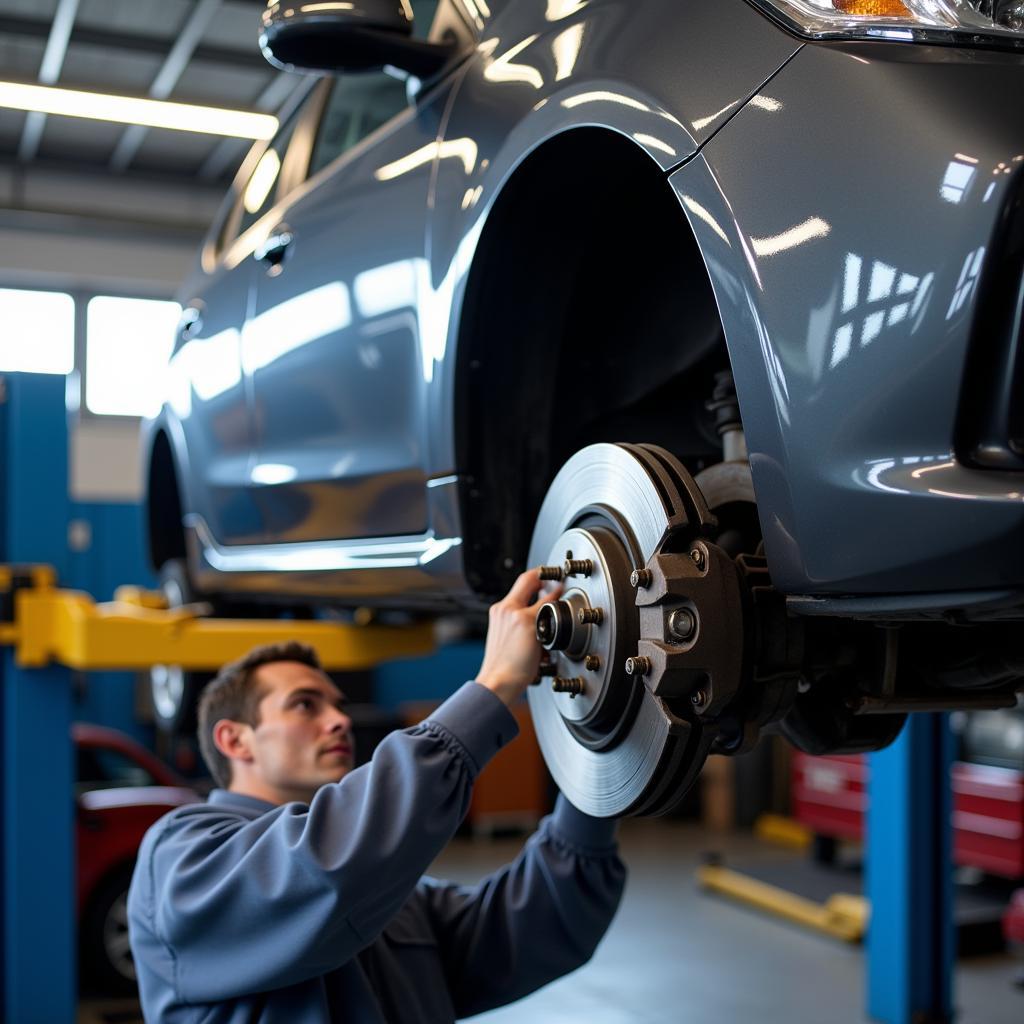 Car Undergoing Brake Maintenance
Car Undergoing Brake Maintenance
Conclusion
The brake warning light is a critical safety feature in your car. Understanding its meaning and reacting promptly can save you from dangerous situations. Remember, if you’re ever unsure about the cause of a brake warning light or how to address it, it’s always best to err on the side of caution and seek professional assistance from a qualified mechanic.
FAQs
1. Can I drive with the brake warning light on?
It’s highly discouraged to drive with the brake warning light on. It indicates a potential issue with your braking system, and continuing to drive could lead to brake failure and dangerous consequences.
2. How much does it cost to fix a brake warning light issue?
The cost of repair varies significantly depending on the underlying cause. A simple brake fluid top-up might cost a few dollars, while a complete brake system overhaul could cost several hundred dollars or more.
3. How often should I get my brakes checked?
It’s generally recommended to have your brakes inspected at least once a year or every 12,000 miles, whichever comes first.
4. Can I add any type of brake fluid to my car?
No, it’s crucial to use the brake fluid type specified in your car’s owner’s manual. Using the wrong type of fluid can damage the brake system components.
5. What does it mean if my brake warning light flashes?
A flashing brake warning light usually indicates a more serious problem, such as a critical brake fluid leak or a malfunction in the ABS system. It requires immediate attention.

